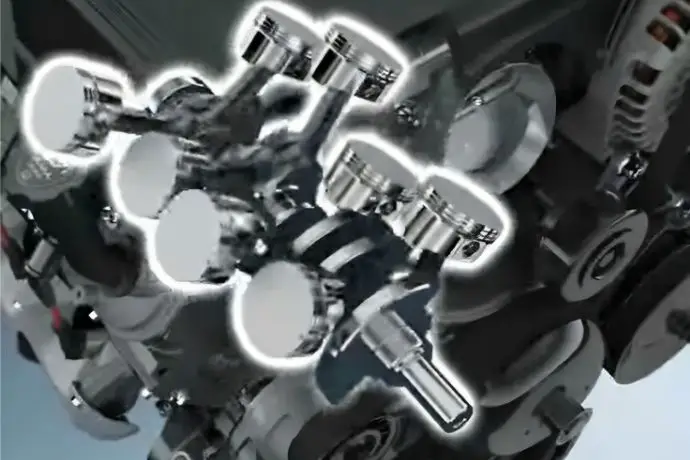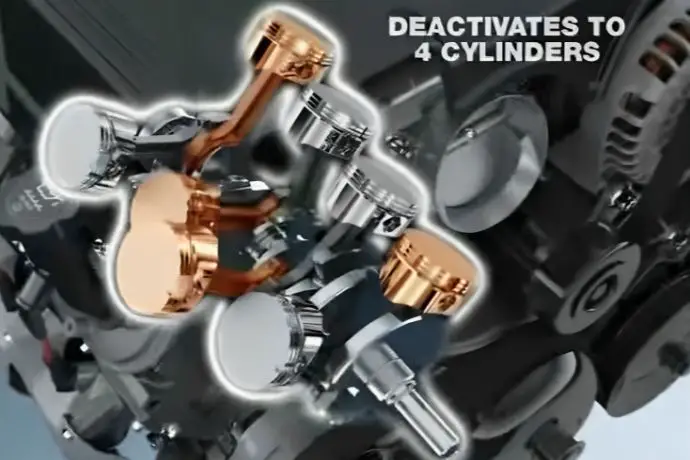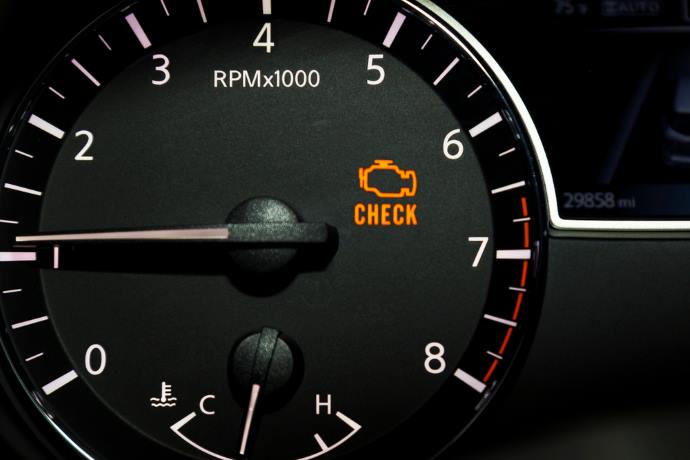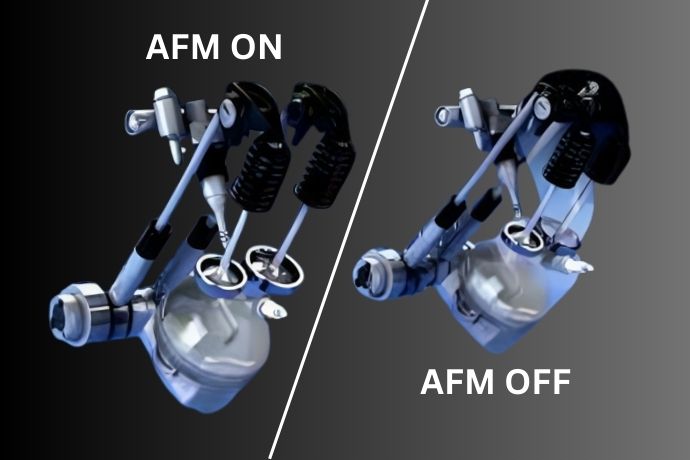To ensure greater fuel economy, automakers have introduced a number of innovations designed to squeeze every last drop of efficiency from vehicles. One such innovation is Active Fuel Management (AFM).
The AFM is a system used in many modern vehicles to improve fuel economy. It works by temporarily deactivating some of the engine’s cylinders when they are not needed, such as during cruising or idle.
According to General Motors, the system increases the vehicle’s fuel economy by up to 15% to 20%, depending on the engine.
Even though the system increases fuel mileage, people want to disable it because of performance and some other issues, such as lifter failure, premature catastrophic engine failure, etc.
On the other hand, some people think the engine runs smoother or more quietly after disabling the AFM. However, you should weigh the pros and cons of AFM before disabling it.
In this article, I have discussed the methods of how to disable AFM for free as well as AFM meaning and the benefits and downsides of disabling AFM.
There are 2 methods of disabling Active Fuel Management (AFM) systems for free, including paddle shifters and a cruise control override. But you should know that these are temporary methods and may not completely deactivate AFM.
They can just effectively minimize the AFM operation. You can completely disable the AFM by installing an AFM disabler or an AFM system delete kit. However, these approaches are not free and involve both time and money.
Method 1: Using Paddle Shifters
If your vehicle has paddle shifters, you can shift into manual mode and then shift to a lower gear (usually 5th gear).
This will cause the AFM system to deactivate.
Steps:
- Shift into manual mode.
- Shift to a lower gear (5th gear).
- The AFM system will deactivate.
- To re-enable AFM, shift back into automatic mode.
Watch the video given below to disable AFM for free:
Method 2: Using a Cruise Control Override
A cruise control override is a feature that allows you to override the cruise control system temporarily.
To do this, press the accelerator pedal.
The AFM system will deactivate until you resume cruise control.
Steps:
- Set cruise control.
- Press the accelerator pedal.
- The AFM system will deactivate.
- To re-enable AFM, release the accelerator pedal.
These methods do not completely disable AFM but provide a practical and free way to minimize its operation, especially when towing or driving spiritedly.
On the other hand, you can disable AFM by purchasing an AFM disabler or a delete kit.
What is Active Fuel Management or AFM

General Motors uses the trademarked term “active fuel management,” also known as “displacement on demand.”
It is a fuel-saving technology that deactivates half of the engine’s cylinders when they are not needed.
This process is done by disengaging the lifters from the cylinders so that the valves no longer open and close.
AFM usually improves fuel efficiency by up to 15-20%, depending on the vehicle and driving conditions.
However, AFM has also been criticized for causing engine vibration and other problems.
Some people also find that AFM makes the engine less responsive and powerful.
As a result, they chose to disable AFM, even though this may reduce fuel economy.
What Engines have Active Fuel Management?
The following engines come with an Active Fuel Management system:
- 9L V6 LZ8
- 9L V6
- 9L V6 LGX
- 0L V6 LGW (Twin-Turbo)
- 3L V6 LV3
- 2L V8 LTA (Twin-Turbo)
- 3L V8 LS4
- 3L V8 Vortec 5300
Benefits of Disabling AFM

Disabling AFM has 05 potential benefits, including:
- Improved Performance: When AFM is enabled, the engine only runs on half of its cylinders, which reduces power and responsiveness. Disabling AFM allows all cylinders to run at all times, resulting in better performance.
- Reduced Vibration: When AFM is activated, it causes excessive vibration, especially at low speeds. Disabling AFM reduces or eliminates the vibration.
- Extend Engine Life: Some users believe that disabling AFM can extend the engine life by reducing wear and tear on the lifters and other components. However, this has not been definitively proven.
- Smoother Operation: Active AFM sometimes causes the engine to run rough or vibrate excessively. Disabling it can eliminate this problem.
- Towing and Hauling Capability: Disabling AFM will provide extra benefits to drivers who use their vehicles for towing or carrying heavy loads.
Ultimately, the decision to disable AFM should be based on your specific driving needs and priorities. You should carefully weigh the advantages and disadvantages to determine which is better for you.
Drawbacks of Disabling AFM
- Reduced Fuel Economy: The AFM is designed to improve fuel economy by deactivating half of the engine’s cylinders when not required. Disabling AFM will cause the engine to run on all cylinders all the time, which will reduce fuel economy.
- Increased Emissions: Disabling AFM will also increase emissions, as the engine will burn more fuel. Disabling AFM also makes it difficult to pass an emission test, as the vehicle will emit more pollutants.
- Void Warranty: Disabling AFM may void the vehicle’s warranty in some cases. This is because disabling AFM is a modification to the vehicle.
- Reduced Performance: Disabling AFM can sometimes reduce vehicle performance. However, this is a rare case.
How to Disable AFM without a Tune
A simple way to disable the Active Fuel Management system without a tune is to use an AFM disabler.
AFM disablers trick the vehicle’s computer into thinking that the AFM system isn’t working, which makes the engine always run on all cylinders.
Note that the AFM disablers are available in different colors, but this does not affect the device’s function. The only difference between different colors is the color of the LED light display.
Here is a summary of the steps involved in disabling AFM with an AFM disabler:
- Get an AFM disabler.
- Locate the OBD-II port under the dashboard on the driver’s side.
- Plug the AFM disabler into the OBD-II port.
- Start the engine.
- The engine will now be in V8 mode all the time.
- To re-enable AFM, unplug the AFM disabler.
Research properly for the best AFM disabler.
Some disablers are designed to disable the AFM system only and not affect the other components.
Therefore, it will not void the vehicle warranty.
In my experience, Range Technology is a well-designed AFM disabler that is ideal for disabling AFM.
Is it Safe to Disable AFM?
Whether or not it is safe to disable AFM depends on many factors, including the make and model of your vehicle, your driving habits, and the condition of your engine.
It is typically safe to disable AFM on most vehicles if done correctly.
However, there are a few risks that you should consider:
- Disabling AFM reduces vehicle fuel efficiency in some cases.
- It can increase the vehicle’s emissions.
- If the process is not done correctly, it may reduce the engine’s lifespan.
- According to some dealers, disabling AFM voids the vehicle’s warranty.
So, if you are considering disabling AFM, focus on both the pros and cons.
If you are not sure, you can consult with a professional mechanic.
Disabling AFM is not safe in the following conditions:
- If the engine is in poor condition,
- If you drive in hot or dusty conditions regularly,
- If you have a modified vehicle.
Problems After AFM Disable and Solutions

There are a few potential problems that can occur after disabling AFM, including:
- Reduce Fuel Economy: Disabling AFM causes the engine to run on all cylinders all the time, which will reduce fuel economy.
- Increased Emissions: Disabling AFM will also increase emissions.
- Increased Engine Wear and Tear: Some drivers reported that disabling AFM will increase engine wear and tear, as the engine will always work harder.
- Check Engine Light: Disabling AFM may cause the check engine light to come on.
If you experience any of these problems after disabling AFM, follow these solutions:
- Avoid aggressive driving and use cruise control more often to maintain fuel consumption.
- Use high-quality fuel and have your vehicle’s emission system inspected regularly to reduce emission problems.
- Change engine oil more often and use high-quality oil to reduce wear and tear.
- If the check engine light comes on, try having the code diagnosed and repaired by a professional mechanic.
- Make sure your AFM disabler is compatible with your vehicle.
- Install the AFM disabler correctly.
- Use high-quality fuel and change engine oil regularly.
FAQs
Can you deactivate AFM?
Yes, you can deactivate the Active Fuel Management system.
There are several methods to deactivate AFM, including using a paddle shifter in manual mode, installing an AFM disabler, and installing an AFM disable kit.
Disabling AFM has some advantages and disadvantages, too.
You should consider both sides before disabling the AFM system.
When to Disable AFM?
You may want to disable the AFM if you are facing the following situations:
- If you are experiencing problems with AFM, such as vibration or rough running,
- If you are towing heavy loads,
- If you are doing a lot of off-road driving,
- If the driving condition is too hot or too cool,
- If you want to modify your vehicle for performance,
- If you have a vehicle with problematic Active Fuel Management.
Will disabling AFM void warranty?
It depends on how you disable AFM.
If you use the correct AFM disabler, such as Range Technology, it is unlikely to void the vehicle’s warranty.
This is because the technology plugs into the OBD-II port and tricks the computer into thinking that AFM is not working.
When you unplug the device, the system works normally.
As the device doesn’t reprogram the vehicle’s computer, it should not be considered a warranty violation.
However, if you tune your vehicle to disable AFM, it will likely void the warranty.
This is because tuning involves reprogramming the vehicle’s computer, which is considered a modification.
Additionally, using an AFM delete kit will also void the warranty.
Because the AFM delete kits remove the AFM hardware from the engine, which is considered a major modification.
As warranty policies vary from dealership to dealership, it is always best to check with your dealer.
What causes AFM lifters to fail?
The most common causes of AFM lifter failure include the following:
- Poor Oil Quality or Contamination: AFM lifters are very sensitive to oil quality and contamination. If you use poor-quality oil or don’t change oil often enough, the lifters can become clogged and fail.
- Low Oil Pressure: AFM lifters need adequate oil pressure to function properly. If the oil pressure is too low, the lifter fails.
- Normal Wear and Tear: AFM lifters are moving parts, and like all moving parts, they wear out with time, especially if you drive in dusty or dirty conditions regularly.
Final Thoughts
The Active Fuel Management system helps improve GM vehicles’ fuel economy by deactivating half of the engine’s cylinders when they are not needed.
But the device also causes some problems, and sometimes the problem becomes expensive to repair.
As a result, many drivers prefer to disable the AFM in a cost-free way.
You can disable AFM for free by following the methods mentioned above.
Make sure you have done it correctly to avoid problems that may occur after disabling AFM.


